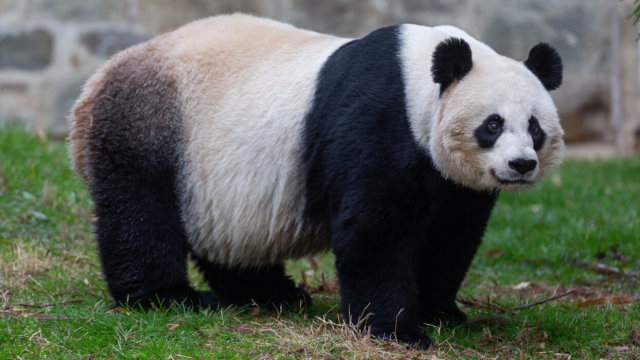Because of the synchronous flowering, death, and regeneration of all bamboo within a species, the giant panda must have at least two different species available in its range to avoid starvation. While primarily herbivorous, the giant panda still retains decidedly ursine teeth and will eat meat, fish, and eggs when available. In captivity, zoos typically maintain the giant panda's bamboo diet, though some will provide specially formulated biscuits or other dietary supplements.[67]
Pandas will travel between different habitats if they need to, so they can get the nutrients that they need and to balance their diet for reproduction. During the summer months bamboo shoots rich in protein are only available at higher altitudes which causes low calcium rates in the pandas and during breeding season the pandas would trek back down to eat bamboo leaves rich in calcium.
The giant panda is a terrestrial animal and primarily spends its life roaming and feeding in the bamboo forests of the Qinling Mountains and in the hilly province of Sichuan. Giant pandas are generally solitary. Each adult has a defined territory and a female is not tolerant of other females in her range. Social encounters occur primarily during the brief breeding season in which pandas in proximity to one another will gather. After mating, the male leaves the female alone to raise the cub.
Pandas were thought to fall into the crepuscular category, those who are active twice a day, at dawn and dusk; however, Jindong Zhang found that pandas may belong to a category all of their own, with activity peaks in the morning, afternoon and midnight. Due to their sheer size, they can be active at any time of the day. Activity is highest in June and decreases in late summer to fall with an increase from November through the following March. Activity is also directly related to the amount of sunlight during colder days.
Pandas communicate through vocalization and scent marking such as clawing trees or spraying urine. They are able to climb and take shelter in hollow trees or rock crevices, but do not establish permanent dens. For this reason, pandas do not hibernate, which is similar to other subtropical mammals, and will instead move to elevations with warmer temperatures. Pandas rely primarily on spatial memory rather than visual memory.

